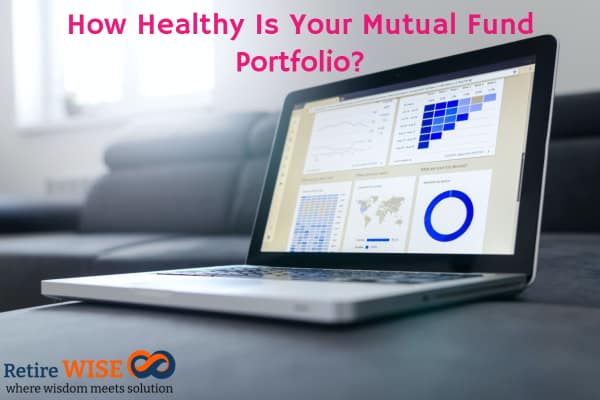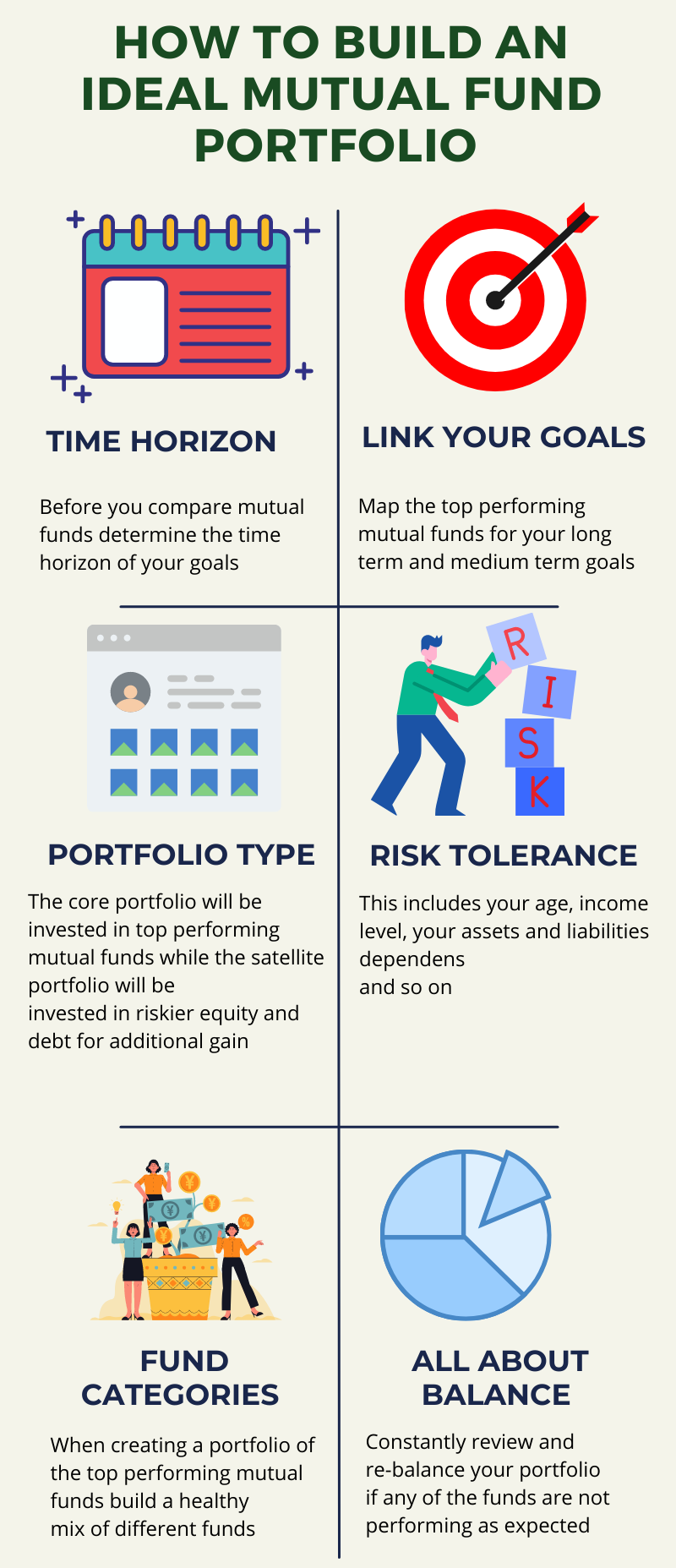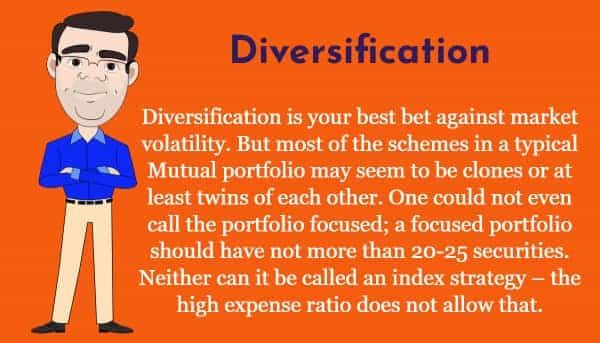Do not put all your eggs in one basket.
~ Warren Buffet
The one thing that the COVID-19 pandemic has taught everyone is that HEALTH IS WEALTH. Health is not simply the absence of disease, though it is the necessary condition, it is a holistic approach towards life and a state of overall well-being…
With that goal in mind, we cannot restrict health to just a physiological aspect. For a dignified and healthy lifestyle, you need to be healthy physically, mentally, emotionally, socially, and economically!

Like your body needs regular visits to the doctor and medical check-ups, so does your portfolio of investments. The most important component of most portfolios, at least in the past two decades, is Mutual funds as they give an opportunity to diversify, expand, and still keep things simple.
Also Check: Portfolio Safety: Is Your Portfolio Risky?
Similarities in Medical check-up and Ideal Mutual Funds portfolio Health check-up
There are many similarities between a medical and an Ideal Mutual Fund portfolio India 2022 check-up:
- Both need access to experts with training, experience, and specialized tool to run tests.
- Both are required periodically and at intervals of 6 to 24 months, depending on age and previous conditions.
- In emergency situations, both need immediate attention, any delay can cause more damage to their condition.
- In both cases, the expert may recommend adjustments, rebalancing, and a plan to recover from the bad situation. Sometimes extreme measures like surgery are also suggested.
The Diagnostics
Asking the right questions will get you the right answers. Detailed Mutual Fund portfolio analysis will have the answer to these questions with clarity and objectivity:

Read More – What are The Different Types of Mutual Funds in India?
Is your ideal Mutual fund portfolio in accordance with your risk profile?
People have a different risk profile that changes over time. The current risk profile is determined by an investor’s age, earnings, liabilities, investible surplus, and propensity to emotionally handle volatility.
As a thumb rule, for seniors above 50, it is better to have high-quality debt funds in their portfolio than more volatile equity funds. Even for a person in their 30s, a debt portfolio is recommended for a goal within a 2–3-year time horizon. Both cannot afford to lose to equity market fluctuations.
Is the Mutual fund portfolio en route to reach defined goals?
If you have equity MFs for a short-term goal, then you may very well see that you are about to reach the goal, and all of a sudden you may see a 30% drop in the fund NAV. This has happened very recently in March 2020. (and will happen every 3 years)
Or you may have a long-term goal with huge commitments, and you are taking the scooter of debt instead of taking the bullet train of equities to reach there. These and other anomalies can be found only by a periodic assessment.
Check –7 Things We All Hate About Mutual Funds
Does your portfolio protect you from the vagaries of the market?
Every asset class can be volatile or remain depressed for a prolonged period. Even the safest (perception) of the two asset classes – real estate and gold – have made movements in the range of ±10% and ±25%, respectively, in the past two decades. The yields on government debt have fluctuated like never before in the same period.
A risk-adjusted combination of multiple assets from different classes will make your overall portfolio less volatile and protect you against sudden losses.
Is my portfolio diversified or focused?
Diversification is your best bet against market volatility. But most of the schemes in a typical Mutual Fund portfolio may seem to be clones or at least twins of each other. One could not even call the portfolio focused; a focused portfolio should have not more than 20-25 securities. (when it comes to funds it should be 8-10 funds) Neither can it be called an index strategy – the high expense ratio does not allow that.
As you ‘collect’ MF schemes over the years, their sheer number may trick you into believing that it is fairly diversified when actually it is not.

Also Check: Risk in Mutual Fund that you may not Know
Incorrect way of diversifying
Having too many funds is not diversification, rather it means, when you start a new SIP or buy a fund, it should add sectors, asset classes, and securities to your portfolio that were earlier missing or underrepresented.
SEBI’s new categorization rules make this simple to understand. For long-term goals if you invest in a mid-cap fund, then their universe is fairly small – only 150. As all mid-cap funds must invest 65% of their AUM in these stocks, their portfolios will overlap. So multiple mid-cap funds will not likely add to your diversification.
If your asset mix is in-line with life?
Everything has a shelf-life, and the best Mutual Fund portfolio in India isn’t an exception. The portfolio of your 30s is most definitely not working in your favor now. A balanced asset mix will have real estate, gold, liquid assets, debt, and stocks.
If your portfolio does not adjust to changes in life, then what worked yesterday may not work tomorrow. Periodic rebalancing will also introduce you to Gold ETFs or SGB, and REITs, to give you the alpha with stability.
Must Read – Should I Invest in LIC IPO and Other IPOs
Is your Mutual Fund portfolio protected from elements?
Our bodies and portfolios both need constant protection from external elements. Financially, elements mean unpredictable external factors that have a bearing on our returns and sometimes on the capital.
COVID-19 pandemic was one such outlier and brought with it rounds of interest rate cuts. Senior citizens were found in a tight spot who had only their interest income to fall back upon. Financial frauds like those in DHFL, Sahara, or IL&FS could be catastrophic for their retail investors. And sudden stock market crash could wipe out your entire life savings.
Is your portfolio sitting on the landmine of hidden risks?
Warren Buffet famously said, “take care of your losers, the winners can take care of themselves.”
If your MF portfolio is secured against worst-case scenarios – a drop of 40% in equities, or a moratorium on interest payments on the debt you hold – then you have taken care of your losers. As time goes by, the risk-taking ability changes and requires periodic stress-testing. It’s like a treadmill test or TMT, to check endurance and stamina.
Investors may be color-blind towards some systemic risks for which financial advisors get special training. This happened again with Yes bank where almost 25% of its loan book consisted of toxic assets, according to reports. The biggest losers were the retail investors of debt MFs holding its AT1 bonds, which were (mis)sold to them as “superior FDs.”
Also Check: ESG Funds- The Change that is Going to Last
Is the fund churning for the sake of churning?
There are funds with churn ratio of 5% & there are few with even 100%.
If you have a well-researched list of securities to invest in beforehand with sufficient margins built into the price, then your portfolio churning is not needed. This is true for both retail investors and the largest MF houses. Buying into the fad, buying for the sake of it, and worst of all buying to justify added commissions and high expense ratios, are all the more reasons to avoid a fund.
Concluding Remarks and Rx
The common misconception about mutual funds is “fit-it, forget-it” – that once you buy or start investing in a scheme, there’s nothing more to be done. They will reach their financial goals in autopilot mode! But, if you continue to ignore your health – physical and financial – then it doesn’t matter, how well do you eat, there will be consequences.
If you want to discuss the health of your investment portfolio –talk to us.
Now you know about the healthy Mutual Fund portfolio. Next article we can discuss how to build an ideal Mutual Fund portfolio? If you have any questions – add them in the comment section.